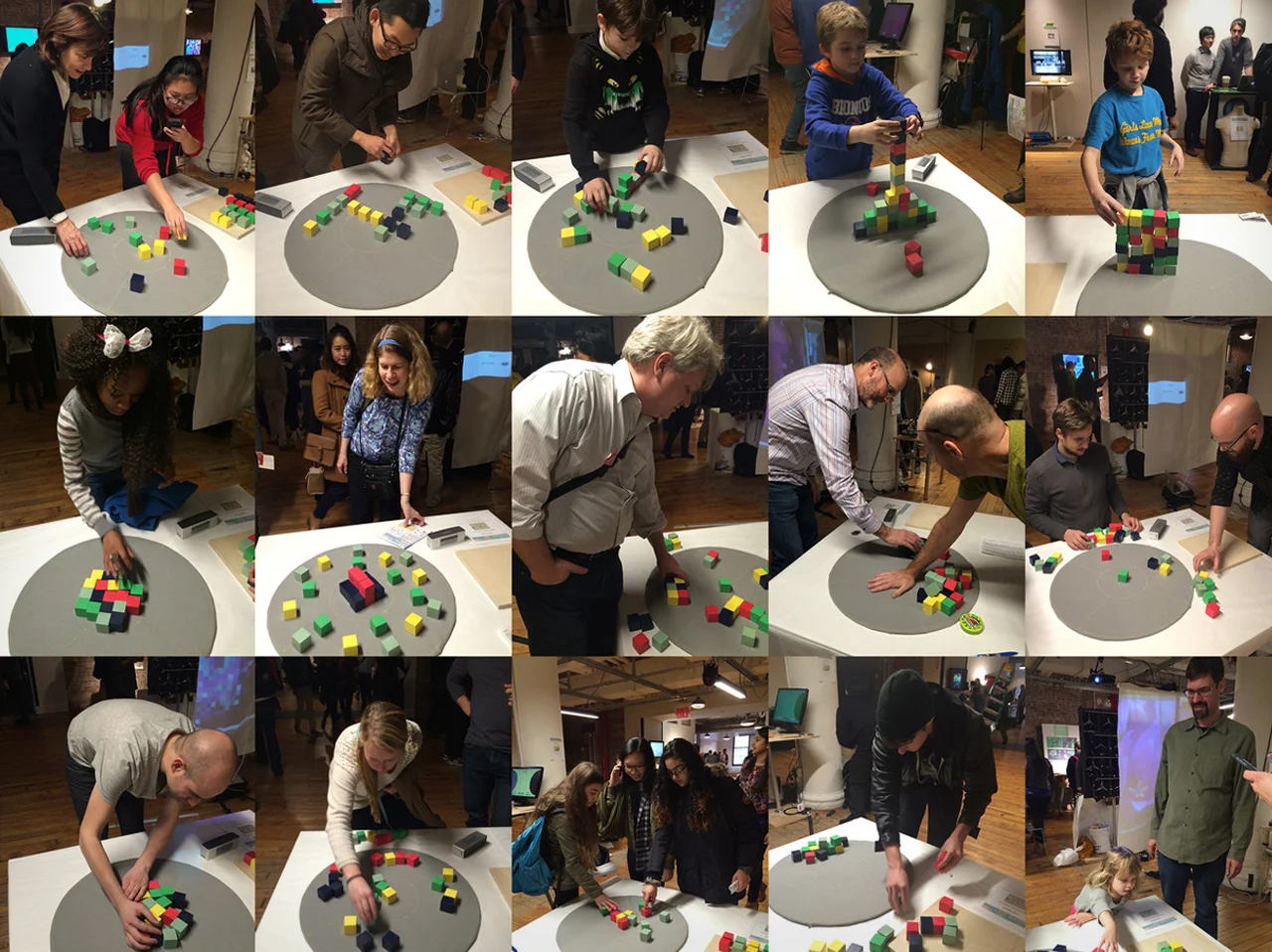FELT SOUND
A felt-pad to play with sound, rhythm, and color
overview
Press : Makezine December 2014
Role : Interface Design, Programming, Fabrication
Team member : Magdalena Kovarik (Interface Design / Fabrication)
November - December 2014
FELT SOUND is a generative sound toy that creates sounds while you play with colorful wooden blocks on an interactive mat. Once you place, stack up, and knock down blocks, you can make countless combinations of sounds in your own ways. As you place more blocks, more sounds will be added in harmonious ways. The felt mat is specifically designed to turn an everyday object into an unexpected sound playground for those who participate.
create a fun, easy, AND intuitive toy
My team wanted to create a modular structure which is easy and intuitive enough that there's no need to explain how to use it. The electronic components should be invisible and the appearance simple and neat.
So we came up with the idea of using wooden blocks that all children know how to play with. In FELT SOUND the mat is divided into quarters and each quarter has a different sound bank of an instrument. The quarters are divided into four concentric circles and depending on which circle you put a brick, the beat changes. The tempo of the beat changes depending on how many blocks you put on a ring. The original instruments included xylophone, flute, violin, glockenspiel.
PROTOTYPE FABRICATION
PHASE 1. TESTING SENSOR SENSITIVITY
Since we wanted to make different sounds by sensing the weight of blocks, we decided to use pressure sensors (FSRs) at first but they didn't prove sensitive enough so we ended up creating several hand-made force sensors.
PHASE 2. PROTOTYPING SENSORS
In order to make customized sensors, we used materials such as conductive fabric, velostat, conductive tape and aluminum foil. We made various types of sensors to check the sensor values and stability so that we can decide which one is the most appropriate for our project.
FIRST USER TEST
FEEDBACK FROM THE TEST:
- Handmade FSRs work better than store bought when people stacked up the blocks and other elements.
- Users liked to listen to all of the sounds and play with multiple blocks and sensors but also wanted to hear them separately
- Users wanted to add more blocks or elements to make more different sounds.
- Users expected to hear the different sounds right after they change the status.
SECOND USER TEST
PHASE 3. FINAL PRODUCT & SECOND PLAY TEST
From the first play test, we found out people wanted to play with more blocks and make various sounds. Users also wanted to make harmonious sounds and expected an immediate response. So we prepared 30 wooden blocks, made the sensors round shape to accommodate more variations, and set different types of delays so we can check what kind of interaction most users prefer.
PAINTING BLOCKS
Making colorful blocks was another way of engaging people to interact with FELT SOUND. We decided to paint blocks in 6 different colors to let people think that those colors create different sounds.
THIRD USER TEST
INCREASING PLAY TIME AND ENGAGEMENT
Painting the blocks increased play time up to 20% and changing the speed of sounds depending on the amount of blocks significantly increased user satisfaction (judging by the size of their smiles ).
FINAL INTERFACE












